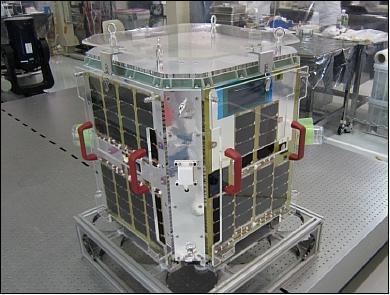Launch date 2017 Launch site Alcantara, Brazil | Mass 35kg | |
 | ||
Similar Super Low Altitude Test Satel, Tenma, Hakucho, Advanced Telescope for High E, Waseda‑SAT2 | ||
Nano-JASMINE (Nano-Japan Astrometry Satellite Mission for INfrared Exploration) is a 35 kilograms (77 lb) astrometric microsatellite developed by the National Astronomical Observatory of Japan. The satellite is scheduled to be launched in 2017 into a sun-synchronous orbit.
Overview
Nano-JASMINE is Japan's first astrometric satellite and is anticipated to be the world's third astrometric satellite, the first being Hipparcos, launched in 1989 by the European Space Agency and the second Gaia launched in 2013 (also by ESA). It is the first of a planned series of three satellites of increasing size: Nano-JASMINE, Small-JASMINE, and JASMINE. The satellite observes in the infrared, allowing for better observation towards the center of the Galaxy, and has a small, 5 centimeter primary mirror.
The satellite should measure positions with accuracy comparable to Hipparcos, but should be useful to determine the positions of stars whose current positions are poorly known owing to uncertainty in their motion since their previous measurement by Hipparcos. In addition, combining nano-JASMINE data with Hipparcos data should enable the determination of more accurate proper motions.
The development cost of the satellite is approximately 100 million yen. It is scheduled to be launched in 2016 by a Tsyklon-4 rocket from the Brazilian Space Agency's launch site in Alcantara, Brazil. The launch has been provided free of charge.
Nano-Jasmine will incorporate the use of star-image extraction (SIE) to cut-down on the amount data sent.
